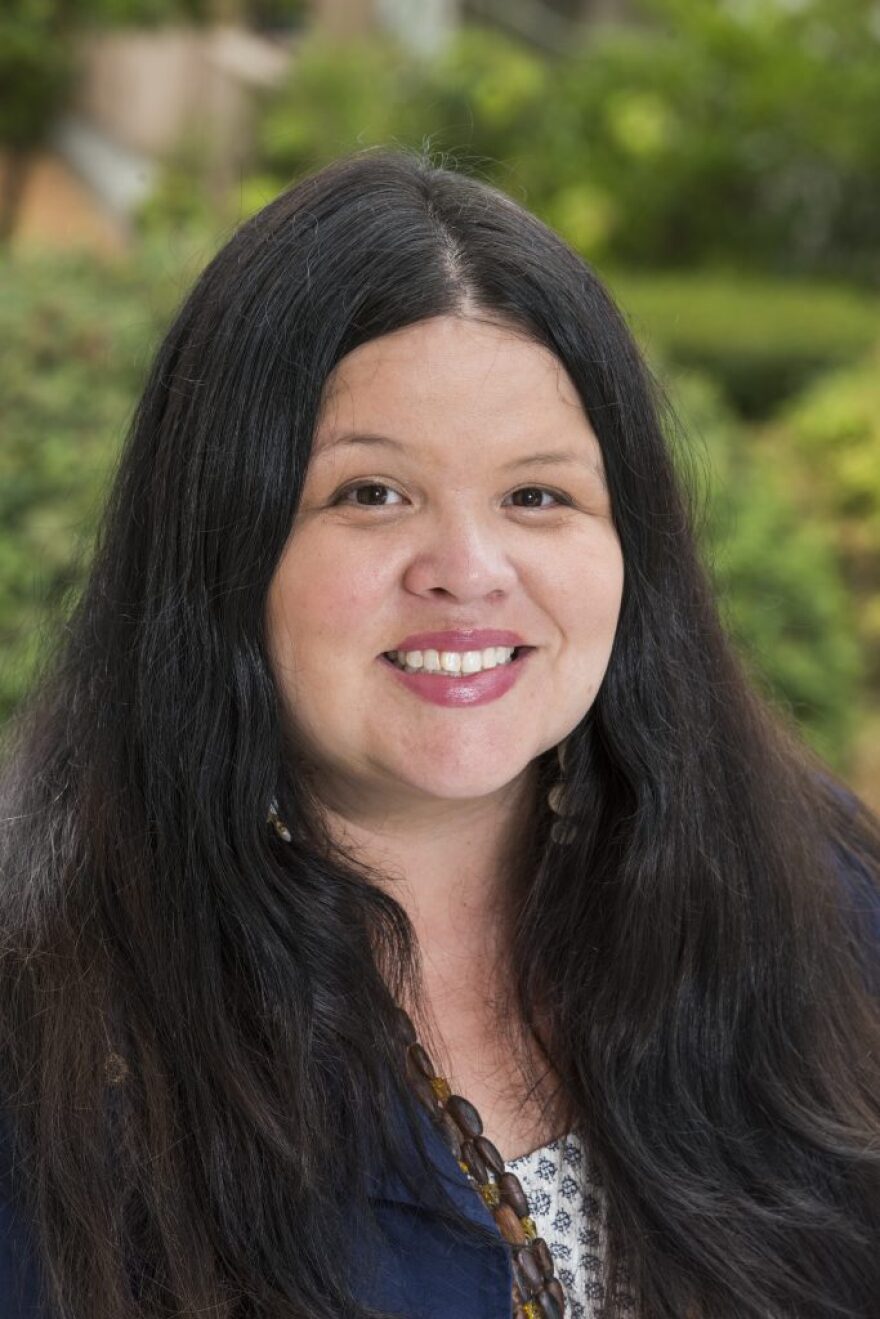California recently released a model curriculum to help teachers incorporate Native American history, culture and experiences into their lessons.
The Humboldt and San Diego County departments of education jointly developed the model curriculum over three years. Cutcha Risling Baldy, a professor at Cal Poly Humboldt, was one of the lead scholars behind the curriculum.
“The state of California had said that they wanted a full Native American studies model curriculum, and they needed people to lead what that would look like,” she said. “There wasn't really an exact vision of what that could be.”
Risling Baldy said the decision to involve two counties was because of California’s size and the vast variety of tribes there. A state law passed in 2021 required the development of this model curriculum.
Not just history
A model curriculum gives teachers a ready-made framework, so they can easily create lesson plans.
“The goal is to create a resource, something that people feel like has been vetted, has been created with community knowledge as well as expertise,” said Risling Baldy.

The Native American studies curriculum spans from transitional kindergarten through 12th grade.
“The goal was really to think about what people want to be able to bring into their classrooms that are pretty easy to implement,” she said. “There's some that are shorter modules, like shorter lesson plans than modules. There's units that could last multiple weeks.”
The lesson plans are also designed to extend beyond history into science, art and math classes.
Risling Baldy grew up weaving baskets. “I didn't know I was learning all the things that I needed to know about different shapes and how you make them. I didn't know I was learning area and circumference,” she said. “I thought I was just learning how to weave a basket.”
Other lesson plans cover subjects like food sovereignty, dam removal and a unit all about acorns.
Risling Baldy said that the goal isn’t necessarily to make people feel guilty about what’s happened to Native Americans throughout history. Instead, it’s to help students understand the importance of tribal sovereignty and what the history means for native peoples today.
“You're a human being learning about the struggles that it took to survive a genocide, and as a human being that will touch you,” she said.
Risling Baldy said that Native people are often framed as historical artifacts rather than living communities. “We're actually human beings navigating those moments.” she said. “When you think about it that way, you start to go like, ‘Okay, what does that mean for us?’”
Community-based learning
A big part of the curriculum’s development involved directly engaging the Native American community. Risling Baldy said a unique part of this curriculum is that it included a lot of storytelling.
“People were able to reach out and talk to their aunties or their great uncles or their grandparents to share things that normally I think wouldn't be in history textbooks or archives,” she said.
Lessons on the Nome Cult Walk, which involved the forced relocation of native people to the present-day Round Valley Reservation, touched not only on the historical aspects of forced relocation but also on what that means for the Round Valley Indian Tribe today and how they’re honoring their ancestors.
“People were able to reach out and talk to their aunties or their great uncles or their grandparents to share things that normally I think wouldn't be in history textbooks or archives."
She said teachers will be able to show how Native Americans are part of contemporary history, not a relic of the past.
“Native people's knowledge is necessary for how we're going to build climate resiliency, how we're going to address climate change, what the future of science looks like, what we should think about when we're doing land management,” she said.
Cultural burning, or prescribed fires in wild areas, has been a part of Native American society for centuries. These practices are starting to play a larger role in landscape management across California.
Risling Baldy said people may not know how Native Americans have influenced many other aspects of American society. Aspirin, for example, was derived from an active ingredient found in willow bark, which Native Americans would chew on to soothe aches and pains. Native women also made an early version of baby formula from walnuts and cornmeal.
A living curriculum
Risling Baldy said the project is designed as a “living curriculum,” one that can be updated as teachers begin using the lessons and giving feedback. But, she said the state has not yet committed any funding to continue developing materials.
“We're really focused right now on professional development to help people who want to learn how to teach the curriculum,” she said.
Professional development seminars are available for teachers, and the model curriculum website, hosted by the University of California, Davis, has additional resources.

Risling Baldy said she thinks educators will also be able to learn from the curriculum and hopes it will be a tool for teachers in other states, who may not have something like this available. She said there are lessons about other tribes and histories taught in school.
“Thanksgiving is a good example,” she said. “Here's other ways that people from outside the state could very much engage with this curriculum and get so much out of it, but also maybe it inspires them to bring in some conversations around California native peoples.”
California schools and teachers don’t have to include these lessons in their curriculum. But Risling Baldy hopes this will help teachers add more Native American history and culture in the classroom. The state law that created this model curriculum encourages high schools to offer a Native American studies class, which would count toward state college admissions requirements.



